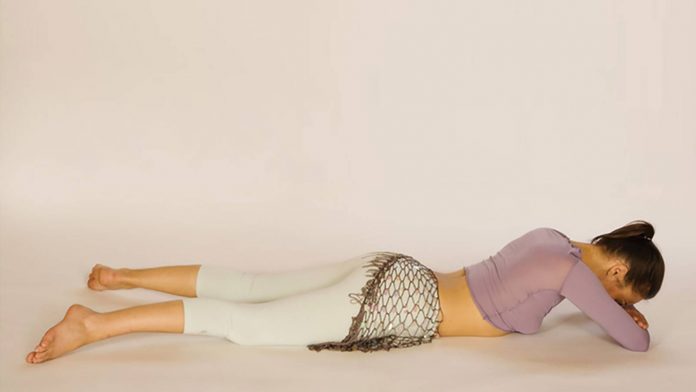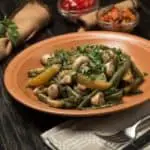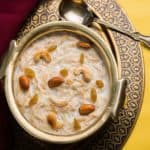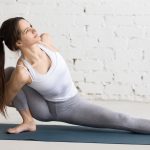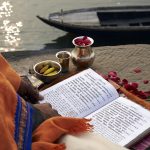Makarasana is deep relaxation restorative pose. It is one of the best poses for setting a state of tranquility in the mind that is generally performed at the end of a rigorous yoga session.
The relaxation mechanism of Makarasana makes it different from the widely used relaxation pose Savasana.
- The erect position of the head and neck in Savasana may induce sleep.
- Makarasana, in comparison, still maintains a light pressure on the neck area. Because of this, practitioners maintain awareness throughout the exercise.
Makarasana’s main goal is to remove any stress that may arise from performing the physical asanas.
Meaning
In Makarasana, our body is positioned in opposition to Savasana, with the hands clasped beneath the head. This elongated face and neck resemble those of a crocodile that is lazing on the water’s surface.
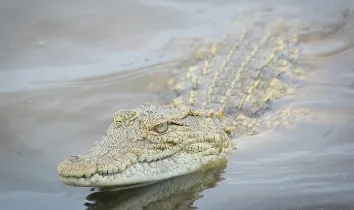
Crocodile is the meaning of the Sanskrit word Makara, and pose is the meaning of Asana. Makarasana is the “Crocodile” pose, also known as “Silent hunters.” Makarasana practitioners do the same thing the crocodile does when it is calmly floating on the water’s surface and surveying all the activity around it. It induces quiet and silence, allowing for more attentive observation of the surroundings.
A treatise from the 17th century called the Gheranda Samhita recommended Makarasana to improve the physical:
Lay on the ground with your back to the ground, your chest in contact with the surface, and your two legs extended. Grab the head with both arms. The increase of body heat, Makarasana, is the name of this pose. Gheranda Samhita Chapter 2 Verse 40.
Makarasana Practice Guide
The Makarasana is simple and safe to perform by adhering to the points below.
Precautions & Contraindications
- Before assuming this posture, a practitioner should get medical advice if they have recently suffered from a major back injury such as Spondylolisthesis (slipped vertebrae at the base of the spine), cauda equina syndrome (nerve compression caused by injury in the lower back), or sprains and strains.
- It should be remembered that eating should be avoided four to five hours before practicing Makarasana in order to avoid major stomach problems.
- Pregnant women should avoid practicing this asana due to the prone position of the asana it would lay pressure on the abdomen and could prove to be fatal for the fetus.
- Avoid doing this pose if you have one of the significant neck conditions listed below. For instance, disc issues, nerve pinches, and cervical spondylitis.
Preparatory Poses
- Cat Pose (Marjari asana)
- Cobra Pose (Bhujangasana)
- Bridge Pose (Sethu Bandhasana)
Makarasana Steps
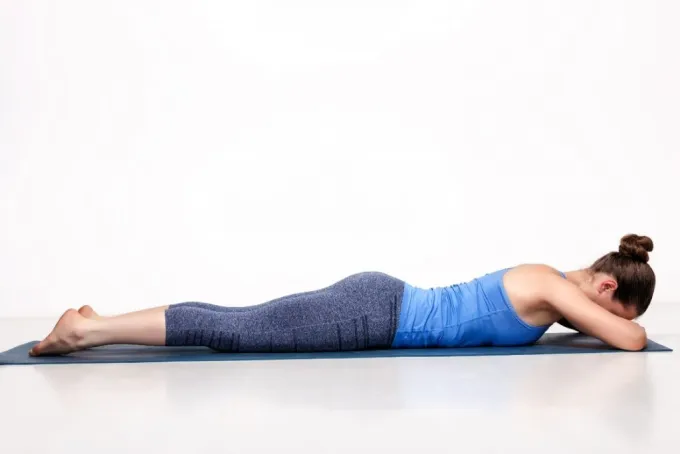
- Lay prone on the mat to start. To guide your body in the asana, relax your body and gain awareness.
- Spread your legs apart with your toes pointed outward. Fold your hands now, with your fingers pointing front and your elbows on the floor.
- Create a space between your elbows and then try to lift your neck and shoulder. Put your palms firmly behind your chin at this point.
- Spread the leg out a little more in an attempt to find a comfortable position. Keep your posture and feel the ground beneath your feet.
- Maintain the position as long as it is comfortable for you. After entering a state of deep relaxation, the person quickly removes their hands from the pose, lays their head down, and unwinds in savasana for a while.
Time & Duration
It is highly reviving to execute the Makarasana for three to five minutes in between the other two yoga asanas since it gives the practitioner an abundance of calm and relaxation.
A minimum of 10 minutes should be allotted if it is to be done at the conclusion of the yoga session. When practicing Makarasana alone, one should hold the pose for at least 15 to 20 minutes.
Follow Up Poses
- Corpse Pose (Savasana)
- Camel Pose (Ushtrasana)
- Bow Pose (Dhanurasana)
Variations
Makarasana is a variation of Salabhasana, according to BKS Iyengar’s description in his book Light on Yoga (Locust Pose). In the Iyengar variant of Makarasana:
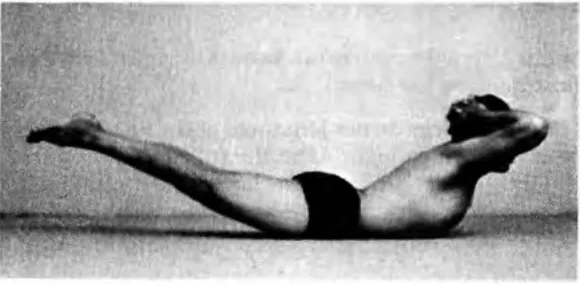
- Inhale, lift your legs up, and then stretch your body backward from the fundamental crocodile stance. Bring your arms back and catch the back of your head with your fingers interlaced at the same moment.
Second variation:
- Bend your arms from the elbows that will support your entire head and torso in a basic crocodile stance. After then, let your head hang between your bent arms and the floor.
Third Variation:
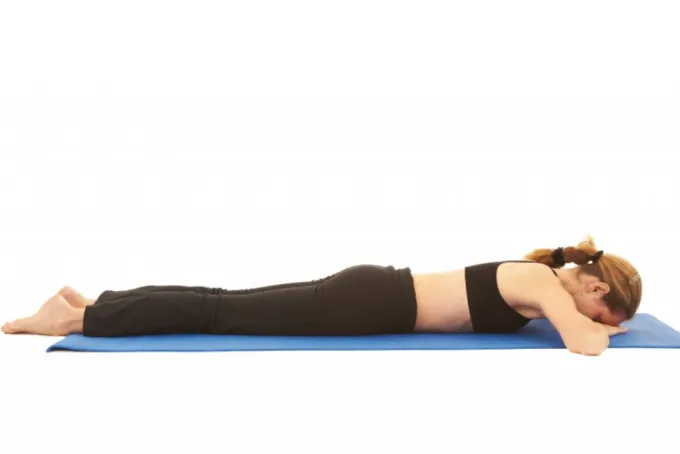
- To embrace oneself, fold your hands in Makarasana and try to hold the shoulder blades on the opposite sides with both of them. Maintaining the position, droop your head into the space between your crossed arms.
Makarasana Benefits
- Makarasana relieves the condition of back pain [efn_note] Effect of Simplified Kundalini Yoga (Sky) Meditation and Exercise on Back Pain among the Women Patients [/efn_note] that may arise due to various issues like slip disc, spondylitis, muscular or vertebral injury. Moreover, it also helps in the development of upper and lower back extensor muscles [efn_note] Evolutionary Complexity and Complications, With Age-Related Changes inHuman Vertebral Column https://www.researchgate.net/ [/efn_note]
- Makarasana has a profound effect on the mental state. This asana brings calming and soothing influence on a practitioner by activating the Parasympathetic nervous system. In this way, it overcomes stress and anxiety [efn_note] Effect of Yoga On Anxiety Score And Resting Heart Rate In Young Healthy Individuals http://njirm.pbworks.com [/efn_note].
- Practicing Makarasana regulates the blood flow and allows the heart to pump in a controlled manner. According to one of the studies [efn_note] Effect of Yoga Therapy on Heart Rate, Blood Pressure and Cardiac Autonomic Function in Heart Failure [/efn_note], it reduces the blood pressure and load on the heart in Heart failure patients.
- It is one of the asanas that are useful for breathing issues like asthma. According to one study, yogic exercises like Makarasana significantly enhance lung function in COPD patients. The study is titled Effect of Adjuvant Yoga Therapy on Pulmonary Function and Quality of Life Among Patients with Chronic Obstructive Pulmonary Disease: http://www.theyogicjournal.com/pdf/2018/vol3issue1/PartF/3-1-43-292.pdf A Randomized Control Trial.
- It can be used for pranayama and meditation because of its calming influence on the body and mind and its solid postural structure.
- The practice of Makarasana exerts pressure on the belly and lower back while simultaneously focusing on breathing, according to an ayurvedic study. To study the efficacy of Makarasana as an Agnivardhana Karma. These exercises work together to have a favorable impact on digestive health.
- Another advantage of this asana for the abdomen is the prone position. Numerous studies have established that yogic practice, particularly Makarasana, rejuvenates the insulin-producing cells of the pancreas of type 1 and type 2 diabetes, easing diabetic symptoms.
Common Mistakes
Despite the fact that the Crocodile Pose is a novice pose with a low risk of injury, it’s crucial to put safety first by keeping appropriate form.
Don’t strain your neck
It can be tempting to gaze up when you are in the elevated form of the pose. Your focus should be forward, though. Your eyes should be directed downward as you assume the lowered variation of the stance. Avoid gazing up since it could hurt your neck. Additionally putting stress on your neck and lower back, moving your head back might also damage your shoulders.
Don’t enter a plank position
The plank exercise has many benefits, but this is not the same as the Crocodile Pose. The plank position has both the lower body and upper body raised and pushing away from the ground. In Crocodile Pose, your lower body should press into the mat. Entering the plank position also puts beginners at risk of losing their balance and falling to the ground. A plank also puts pressure on the wrists and forearms, which is not the goal of the Crocodile Pose.
Rotate your arms and shoulders carefully
You might need to carefully rotate your shoulder blades as you lower your body to the ground and find a comfortable posture for your arms and hands. To prevent injuring your shoulders, move slowly. Control the motions of your arms so that they are fluid, whether you decide to elevate up on your arms or lower your head to the ground while your arms are by your side.
Lifting quickly may strain your back
The goal of the crocodile pose is to relax your back. However, rushing into the position can have the reverse effect and increase tension there. If you decide to raise your upper body, make sure to do so carefully and under complete control. This will increase your lower back’s flexibility without placing your back at risk of injury.
















